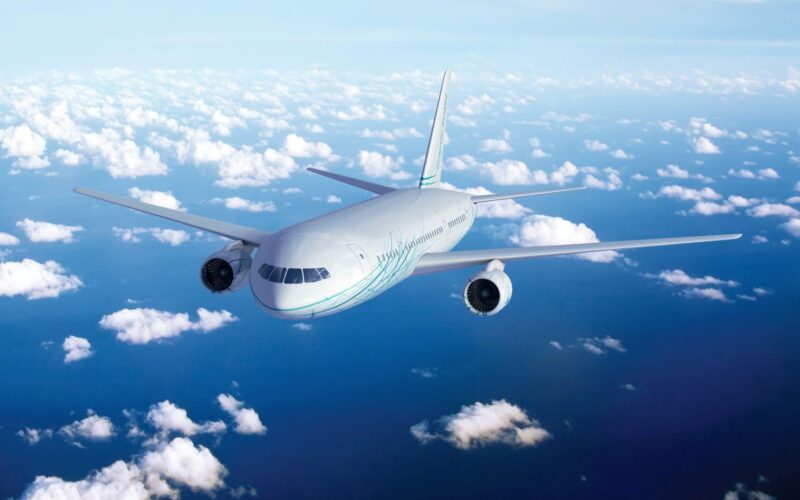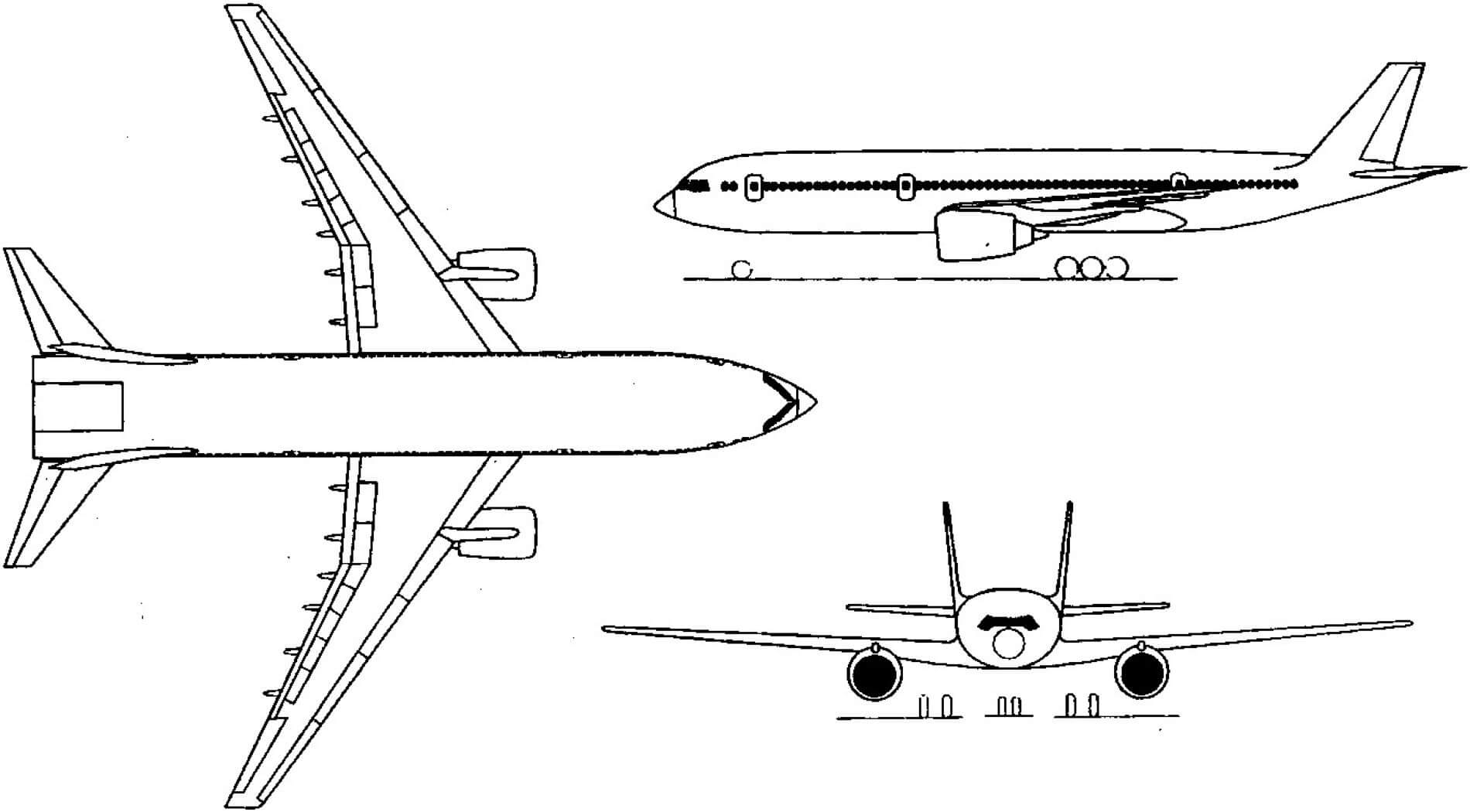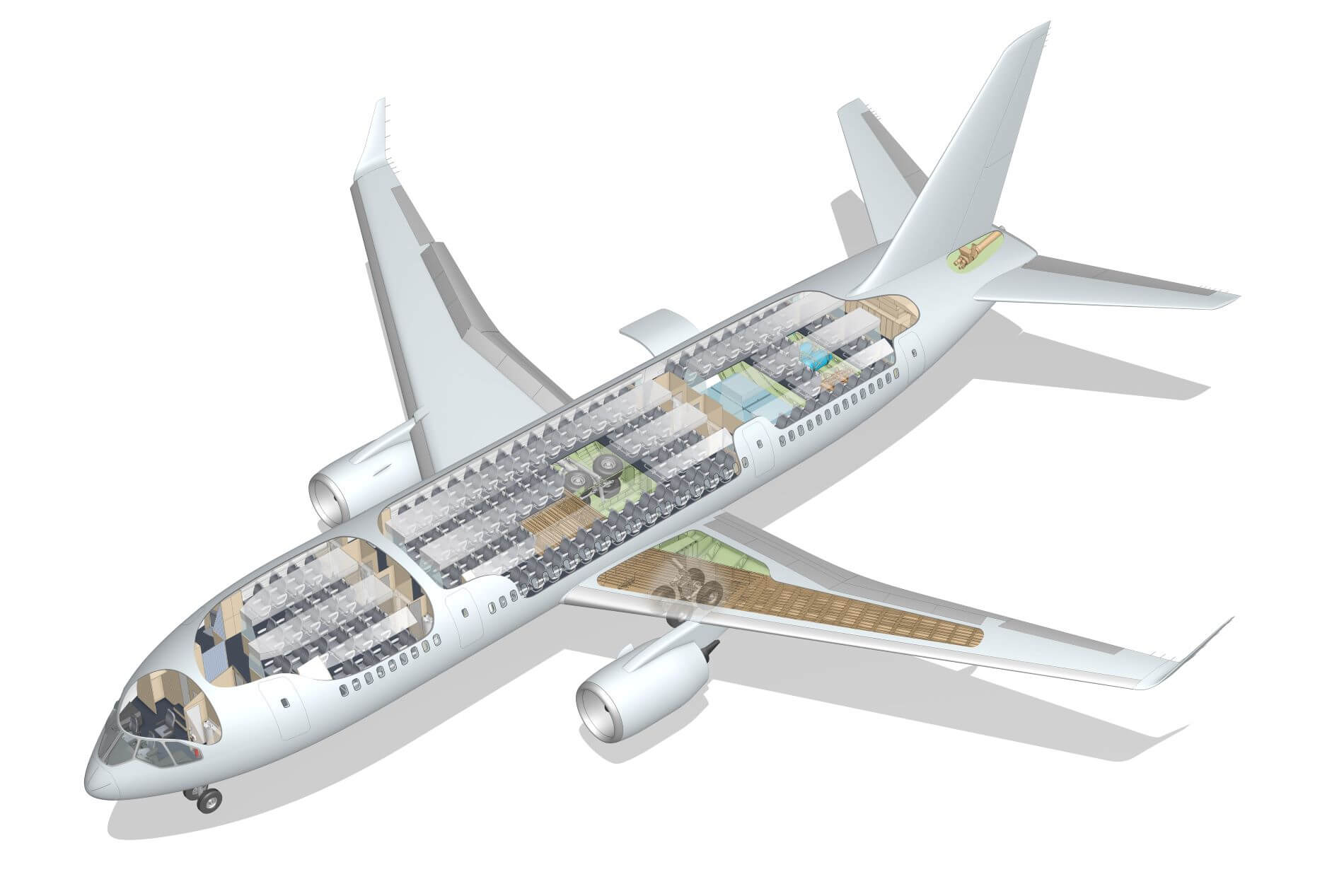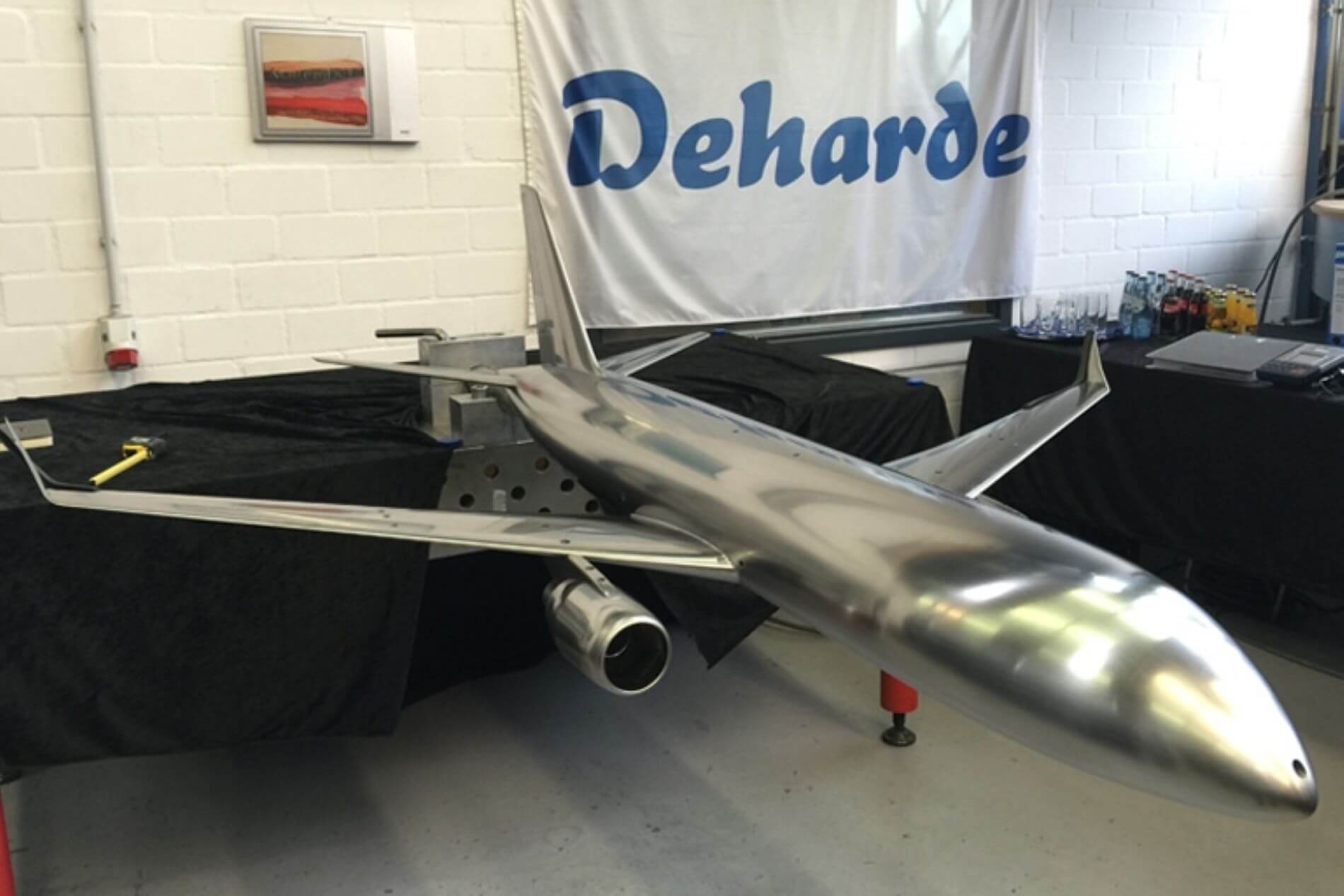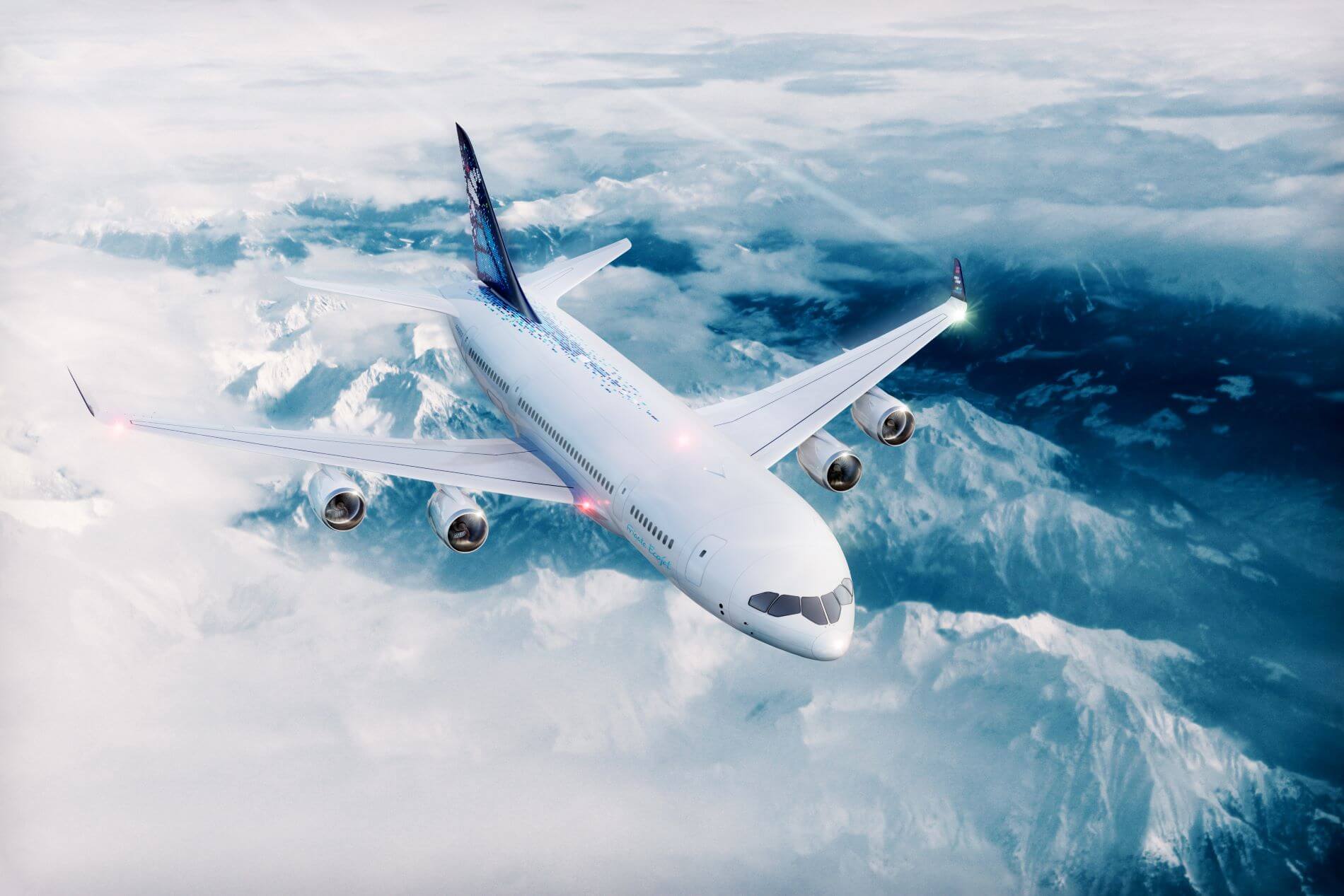Frigate Ecojet was a Russian project of a wide-body, four-aisle airliner with an oval fuselage cross-section. The team aimed to develop an airplane for a market long-occupied by Airbus and Boeing, and do it with the energy and resources of a startup. They drew from the roots of the whole Russian aviation industry but tried to uphold the standards and operations of a modern company.
They even kept adapting to circumstances and enacting massive changes in the project to stay relevant through the two-decades-long development. But that was not enough.
In November 2020, AeroTime asked Alexandr Klimov, the head of the project, about the state of the development of the aircraft. Klimov responded that a decision to freeze all work has been reached, and starting December, the Ecojet was going to officially be on hold.
“We are going to announce that in two weeks,” Klimov added.
Half a year has passed, and there was no official announcement. The company’s management did not respond to further emails, and the website of the team still displays the last press release from 2018.
So, the most ambitious aircraft development program in Russia’s recent history went out not with a bang, not with a whimper, but without any sound at all. Since then, numerous pieces of media were published – articles, educational videos, and so on – with claims that the development is ongoing, and we will probably see the Ecojet soon. Unfortunately, such a possibility is very unlikely.
Of course, officially the project is not dead. Even if the fact that it has been put on hold was officially announced, there would always be a chance of it being resumed: numerous Soviet and Russian projects spent years on ice before being resurrected. But for every project with such a fate, dozens, if not hundreds have remained on paper forever.
One of them is the Tupolev Tu-304, the project from which the Ecojet evolved. Officially, that project is still on hold too, status-wise putting both planes on the same shelf.
But how did everything start, and most importantly, why did the development run for so long?
The 304
There is some conflicting information about the Tu-304, also sometimes referred to simply as “the 304”. Its development was most likely initiated either in 1990 or 1991, although the preliminary work may have started a bit earlier. It was supposed to be the second aircraft in Tupolev’s new line of next-generation airliners, a step above the middle-of-the-market Tu-204.
Tu-304 would have been a twinjet, powered by a newly developed, highly efficient Kuznetsov NK-44 turbofan. With the range of 10,000 kilometers, it could compete with the upcoming Boeing 777, and easily take out a chunk of both Airbus A330 and A340. It could have been the first plane the newly established Russian Federation offered to the Western market.
The time was turbulent: the collapse of the Soviet Union ushered in a financial collapse but opened new opportunities for Russia’s aircraft manufacturers. Some engineers emigrated, others got involved in mutual projects with Western companies, but many tried to realign the legacy of the centralized Soviet industry with the emerging market economy.
Aircraft like the Tu-204 and the Tu-304 may have been conceived when nobody could even imagine a prospect of selling them to European or American airlines, but now this was a real possibility. Moreover, Western companies saw quite a bit of potential in the exotic nature of the post-Soviet technology; and on top of all, it was incredibly cheap.
And the Tu-304 seemed like it could offer some things neither Boeing nor Airbus had. It was supposed to have laminar flow wing, up to 15% of composite materials in its structure (the 777 had 12%), and could come with a wide variety of both western- and Russian-made avionics and engines.
But most importantly, it would have been bigger. With an intention to replace new, but already outdated four-engine Il-96 (an upgraded Il-86, Soviet Union’s answer to the Boeing 747) it could feature 500 seats in all-economy configuration. Later plans reduced the size, with 400 seats in all-economy and 312 seats in three-class configuration, which was in between various contemporary models of the 777. But the developers assured that there is plenty of potential for a stretch.
Rough scheme of Tupolev Tu-304.
The most striking feature of the Tu-304 was, of course, the oval cross-section of the fuselage. Not a new idea in itself (pre-jet era airliners had all kinds of cross sections) it has never been implemented on near-sonic, high-flying passenger jet.
It is difficult to pressurize such a fuselage, and it required much more structural weight. But engineers at Tupolev felt that they could pull it off. It would allow to have a ten-abreast, 2-3-3-2 seating in the economy class, and the 2-2-2-2 seating in the business class, three aisles providing much more comfort and flexibility than two aisles of regular wide-body airliners.
The project was officially announced in 1995. Some sources claim that a mockup of the aircraft was built, but there are no photos, and that fact might be just a myth. Some other of Tupolev’s odd-looking projects – such as the Tu-404 flying wing or the natural gas-powered Tu-206 – had been presented at various airshows, complete with models and other promotional material. But, for some reason, the Tu-304 never reached that stage.
The idea of Western airlines buying Russian jets never materialized too: by the late 90s the interest disappeared. Although cheap an exotic, the produce of post-Soviet aviation industry was not seen as high-quality, well designed or even safe. Russian airlines had no intention in buying Russian-made jets too – flying Airbus and Boeing was seen as more prestigious, western aircraft were oftentimes more luxurious, widely available and in many cases not that expensive.
Not only Tupolev, but all the other post-Soviet manufacturers survived the early 90s on enthusiasm alone. By the end of the decade, with widespread corruption, no government support and no orders in sight, companies started falling apart.
Tupolev’s conversion from a party-controlled design bureau to a company did not go smooth too. In 1995 it became a part of Rosaviaconsortium – the first attempt to consolidate the disorganized mess that was the post-Soviet aviation industry, and that meant a lot of optimization. By 1998, the transition was not yet complete, and between hearings at the Russian parliament and production moving to a standstill due to the lack of funds, there was a need to get rid of all but essential projects.
In 1997, Valentin Klimov, the chief engineer of Tupolev and the head of the Tu-304 program, became the general director of Rosaviaconsortium. Besides the inability to continue hands-on work on the jet, he made a lot of difficult, yet necessary decisions. One of them was to concentrate on the production and further development of the Tu-204, the only somewhat successful Russian airliner of the time.
By 1998, the development of the 304 was completely abandoned. It became just another “project of the 90s” – a description nowadays indicating ambition, naivety, and failure.
The Ecojet
It is somewhat difficult to pinpoint not only what spurred the resurrection of the Tu-304, but when it happened too.
According to some less-than-reliable sources, Valentin Klimov dusted off the abandoned program in 2004. But there is no mention of it anywhere up until the official announcement in 2010, although that announcement contained a surprisingly developed, thought-out, and well-prepared idea.
The Tu-304 was rebranded as Frigate Ecojet, a result of then-fashionable westernization in Russia, and even clearer indication of orientation towards western markets.
(Image: Frigate Ecojet)
The overall appearance of the jet was retained, save for two vertical fins being replaced by just one. But concept-wise, pretty much everything was changed. The aircraft would no longer be developed by a major corporation – it had to be a startup, headed by Klimov’s young and energetic son, Alexandr Klimov. The process would be rife with larger than life promises of ecology and efficiency.
“Aviation industry is in crisis,” Klimov said in a contemporary interview to press agency Interfax. “Aircraft prices remained stagnant since the 70s. It is impossible to solve this problem in the framework of the old technological state. We have to not only develop a new aircraft but to enter a new level of technological development.”
The argument was to significantly reduce the price of the production by any means possible. Bloated supply systems, complicated chains of contractors, high entry barriers, difficult legacy of long-gone processes – pretty much everything about the existing aviation industry was identified as a culprit.
The way out of that contained a whole methodology of high-tech solutions and fashionable business buzzwords. The team aimed to develop “a new ecosystem” of aircraft development and manufacturing.
The aircraft itself was a bit unconventional too. Dropped was a pretense of competing with western manufacturers; in the early days, Klimov constantly presented the Airbus A300 as the main role model: a wide-body with comparatively short range, something that filled the need not seen by major manufacturers at the time.
So, the Ecojet – while retaining the capacity of 300 to 350 passengers – would have a maximum range of just 3,500 kilometers (2,175 miles), being, essentially, a super-sized mainline jet. Half a decade later the company started advertising it as a middle-of-the-market one, an idea that rose in popularity as both Boeing and Airbus raced to make their 737 and A320 bigger and bigger.
The initial stage of the development was the most active one: by 2013 the company completed wind tunnel testing of a model, organized a series of discussions with various low-cost airlines, and amassed support from an impressive number of foreign research institutions. Officially, the program was international, which would have helped with eventual certification.
(Image: Frigate Ecojet)
By 2015, it began stalling. International ties got severed with rising geopolitical tensions, as collaboration with foreigners became a curse word in Russia. As indicated on the Ecojet website, the program was still stuck in the “formulating of a business model” phase, whatever that phrase actually meant.
In reality, a myriad of reality-related problems was encountered. It turns out, just talking about “a new ecosystem” does not create an actual aircraft.
Especially if that ecosystem inherits all the flaws of a previous one, and makes them worse. According to Klimov, the actual design and manufacturing of the jet were to be completely relegated to third parties: outsourcing detailed design work, production of the prototype, and other important steps.
It is difficult to say how that was better than the traditional development with bloated supply chains and a myriad of contractors. The newly invented way to solve existing problems, in reality, just made them worse.
Since 2017, the program entered a state of extreme turbulence. It got rebranded again, mostly due to the change in concept: with foreign engine manufacturers out of reach, domestic alternatives had to be developed; the only sufficiently efficient engine was the PD-14, developed for the MC-21, but it was way too weak.
The twinjet turned into a quadjet, an anachronism that, probably, would have been scolded by Klimov had he encountered the idea in the early 2010s. The rest of the characteristics remained the same, meaning that the change had little to do with anything else. The aircraft was renamed into Freeejet, although nobody bothered changing the name of the company.
(Image: Frigate Ecojet)
The rebranding brought in a new wave of attention, and the head of the development used that to assure the press: the Ecojet is going to be a purely Russian program now, utilizing Russian talent.
But Russia already had a medium-range jet that it invested a lot of money into – the MC-21. There also were no factories to outsource the manufacturing to.
The entire idea was hanging in the air without firm support, like a Wile E. Coyote that has just run off a cliff. The company started repeating motions time and time again seen in stories of failing ambitious projects: the change in focus (in 2018 Klimov claimed that the prime objective of the company now is to create a “digital aviation development platform”, and an aircraft will follow); the sudden contraction of workforce, masked as “optimisation”; the incoming lawsuits.
In 2019 the company got sued for tax evasion. By that time, according to financial reports, 5 people were working at Frigate Ecojet company. Its website described Alexander Klimov as “program leader”, not a CEO. Financial reports indicate that the real CEO was Mariya Zhuganova: an accountant of Rosaviaconsortium.
As of writing of this article, nothing changed. There were no formal announcements, and the company froze at its smallest. It has not received investments in recent years. The information, obtained from Klimov in late 2020, indicates that the Rosaviaconsortium does not have much faith in it too.
On the one hand, it would be easy to describe Frigate Ecojet as just another victim of the COVID-19 crisis: after all, the pandemic struck the wide-body market the most. And there is no doubt that with the whole industry contracting, investments in new and unproven ideas would be few and far between.
On the other hand, the Ecojet was not a long range aircraft, and in its late stage it was almost exclusively aimed at Russian low-cost airlines – a market that did not suffer from the pandemic that much, but even despite that would have not warranted developing a whole new aircraft.
So, in some way, the ambitious project was doomed for quite some time now. It was only a question of time before it got abandoned.

